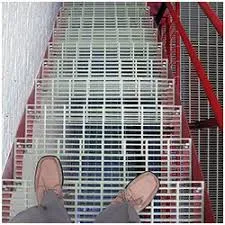
-
 Afrikaans
Afrikaans -
 Albanian
Albanian -
 Amharic
Amharic -
 Arabic
Arabic -
 Armenian
Armenian -
 Azerbaijani
Azerbaijani -
 Basque
Basque -
 Belarusian
Belarusian -
 Bengali
Bengali -
 Bosnian
Bosnian -
 Bulgarian
Bulgarian -
 Catalan
Catalan -
 Cebuano
Cebuano -
 China
China -
 China (Taiwan)
China (Taiwan) -
 Corsican
Corsican -
 Croatian
Croatian -
 Czech
Czech -
 Danish
Danish -
 Dutch
Dutch -
 English
English -
 Esperanto
Esperanto -
 Estonian
Estonian -
 Finnish
Finnish -
 French
French -
 Frisian
Frisian -
 Galician
Galician -
 Georgian
Georgian -
 German
German -
 Greek
Greek -
 Gujarati
Gujarati -
 Haitian Creole
Haitian Creole -
 hausa
hausa -
 hawaiian
hawaiian -
 Hebrew
Hebrew -
 Hindi
Hindi -
 Miao
Miao -
 Hungarian
Hungarian -
 Icelandic
Icelandic -
 igbo
igbo -
 Indonesian
Indonesian -
 irish
irish -
 Italian
Italian -
 Japanese
Japanese -
 Javanese
Javanese -
 Kannada
Kannada -
 kazakh
kazakh -
 Khmer
Khmer -
 Rwandese
Rwandese -
 Korean
Korean -
 Kurdish
Kurdish -
 Kyrgyz
Kyrgyz -
 Lao
Lao -
 Latin
Latin -
 Latvian
Latvian -
 Lithuanian
Lithuanian -
 Luxembourgish
Luxembourgish -
 Macedonian
Macedonian -
 Malgashi
Malgashi -
 Malay
Malay -
 Malayalam
Malayalam -
 Maltese
Maltese -
 Maori
Maori -
 Marathi
Marathi -
 Mongolian
Mongolian -
 Myanmar
Myanmar -
 Nepali
Nepali -
 Norwegian
Norwegian -
 Norwegian
Norwegian -
 Occitan
Occitan -
 Pashto
Pashto -
 Persian
Persian -
 Polish
Polish -
 Portuguese
Portuguese -
 Punjabi
Punjabi -
 Romanian
Romanian -
 Russian
Russian -
 Samoan
Samoan -
 Scottish Gaelic
Scottish Gaelic -
 Serbian
Serbian -
 Sesotho
Sesotho -
 Shona
Shona -
 Sindhi
Sindhi -
 Sinhala
Sinhala -
 Slovak
Slovak -
 Slovenian
Slovenian -
 Somali
Somali -
 Spanish
Spanish -
 Sundanese
Sundanese -
 Swahili
Swahili -
 Swedish
Swedish -
 Tagalog
Tagalog -
 Tajik
Tajik -
 Tamil
Tamil -
 Tatar
Tatar -
 Telugu
Telugu -
 Thai
Thai -
 Turkish
Turkish -
 Turkmen
Turkmen -
 Ukrainian
Ukrainian -
 Urdu
Urdu -
 Uighur
Uighur -
 Uzbek
Uzbek -
 Vietnamese
Vietnamese -
 Welsh
Welsh -
 Bantu
Bantu -
 Yiddish
Yiddish -
 Yoruba
Yoruba -
 Zulu
Zulu
Advanced FRP Absorber Solutions | Enhance Energy Efficiency
Understanding FRP Absorbers A Comprehensive Overview
Fiber Reinforced Polymer (FRP) absorbers are innovative materials designed to control sound and vibrations in various applications. Combining the lightweight properties of polymers with the strength of fibers, FRP has emerged as a vital component in acoustic engineering and structural applications.
Understanding FRP Absorbers A Comprehensive Overview
FRP absorbers achieve their sound-dampening effects through a combination of their structure and material characteristics. The fibers, usually made of glass, carbon, or aramid, are embedded within a polymer matrix. This composite structure provides both flexibility and strength, enabling the material to respond dynamically to sound waves. When sound waves hit the surface of an FRP absorber, a portion of the energy is converted into internal energy, effectively reducing the amplitude of the sound that passes through.
frp absorber

Furthermore, the design of FRP absorbers can be customized to enhance their sound-absorbing capabilities. This customization can include variations in thickness, density, and surface texture, allowing engineers to tailor the absorbers for specific applications. For instance, thicker absorbers may be utilized in environments where lower frequencies are prevalent, while lighter versions might be ideal for higher frequency sound control.
In addition to their acoustic applications, FRP absorbers exhibit remarkable durability and resistance to environmental factors. Unlike traditional materials such as wood or metal, FRP does not corrode or degrade easily, making it suitable for outdoor installations or harsh environments. This longevity not only reduces maintenance costs but also contributes to sustainability, as fewer materials are required for replacements or repairs.
The production process of FRP absorbers is also worth noting. Utilizing advanced manufacturing techniques, these absorbers can be produced in various shapes and sizes, allowing for seamless integration into architectural designs without compromising aesthetic value. Their lightweight nature simplifies installation, making them a favorable choice for modern construction practices.
In conclusion, FRP absorbers represent a significant advancement in sound and vibration management technology. Their unique properties, coupled with customizability and durability, make them an ideal solution for a wide range of applications. As urbanization continues to increase noise pollution and the demand for effective sound control becomes ever more critical, the role of FRP absorbers in creating quieter, more enjoyable environments will only grow. Whether in commercial, industrial, or residential settings, these innovative materials are proving to be indispensable in the quest for acoustic excellence.









